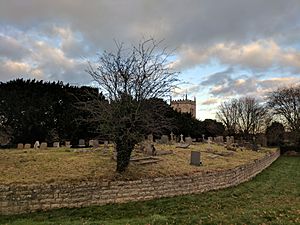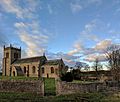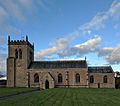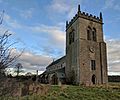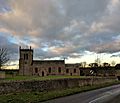St Mary's Church, Norton Cuckney facts for kids
Quick facts for kids St Mary's Church, Norton Cuckney |
|
|---|---|
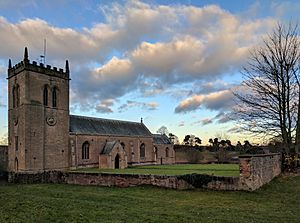
St Mary's Church, Norton Cuckney
|
|
| 53°14′12.16″N 1°9′10.77″W / 53.2367111°N 1.1529917°W | |
| OS grid reference | SK 56632 71391 |
| Location | Cuckney |
| Country | England |
| Denomination | Church of England |
| History | |
| Dedication | St Mary |
| Architecture | |
| Heritage designation | Grade I listed |
| Administration | |
| Parish | Norton Cuckney |
| Deanery | Bassetlaw and Bawtry |
| Archdeaconry | Newark |
| Diocese | Diocese of Southwell and Nottingham |
St Mary's Church, Norton Cuckney, is a very old and important church. It is located in the village of Cuckney in England. This church is part of the Church of England. It is so special that it has a Grade I listed status. This means it's one of the most important historical buildings in the country.
At the edge of the churchyard, you can find the remains of Cuckney Castle. This was a "motte and bailey" castle, which means it had a big mound (the motte) with a tower on top. It also had a walled area (the bailey) below. This castle is also a Scheduled Monument, meaning it's protected by the government because of its historical value.
History of the Church
The church itself was first built a very long time ago, in the 12th century. That's the 1100s! Over the years, it has been repaired and updated several times. Major restoration work happened in 1667, 1892, and 1907.
Working Together
St Mary's Church is part of a group of churches that work together. This group is called a "joint parish." The other churches in this group are:
- St Winifred's Church, Holbeck
- Welbeck College Chapel
Special Memorials
Inside the church, on the floor of the main area called the nave, there is a very old stone slab. It's made of black marble and is quite worn down. People believe this slab is the tomb of Robert Pierrepont, 1st Earl of Kingston-upon-Hull. He passed away around 1643.
The Church Organ
The church has a beautiful pipe organ. It was made by a company called Brindley & Foster in 1877. If you are interested in organs, you can find more details about this specific organ on the National Pipe Organ Register.
Images for kids


